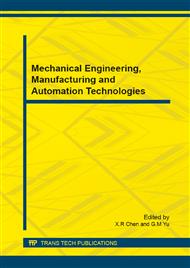p.359
p.363
p.367
p.373
p.381
p.386
p.390
p.396
p.400
Arterial Velocity Planning Based on Traffic Light Conditions for Driver Assist Driving System
Abstract:
With the development of modern wireless communication technology, the driver assist driving system gets more and more attention from people, because it could receives many real-time information, such as traffic lights information, road information and so on. The arterial velocity planning algorithm based on traffic lights information makes vehicle more economically and efficiently, because it could help driver decrease the acceleration/ deceleration pattern and idling time. This paper creates 3 arterial velocity planning algorithms by analyzing the vehicle driving process, and the acceleration/deceleration parameters and driving time of these three algorithms are optimized. When the vehicle is driving, the arterial velocity planning algorithm gives the dynamic speed advice to the driver through driver assist driving system, ensures that the vehicle will cross the traffic light without coming to a stop. The results show that the fuel consumption savings for vehicles with arterial velocity planning is above 11% on a relatively smooth arterial road.
Info:
Periodical:
Pages:
381-385
Citation:
Online since:
December 2014
Authors:
Price:
Сopyright:
© 2015 Trans Tech Publications Ltd. All Rights Reserved
Share:
Citation:


